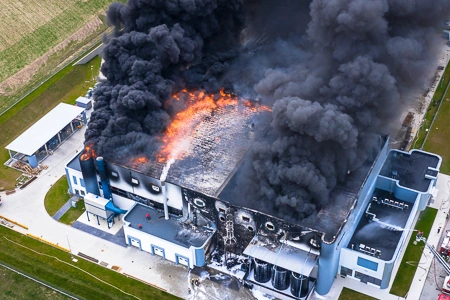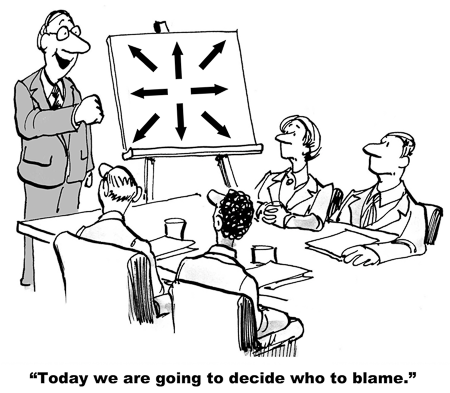The Human Factor in Accident Investigations: Why Most Fail
How Human Behaviour Skews Investigation Outcomes
Accident investigations are a staple in most safety management processes across all industries. When things go wrong, we want to know why.
When kids stumble, they get up and keep going. When adults stumble, however, they tend to pause and look back to identify why. The need to understand what went wrong is crucial to improvement and is also a hallmark of learning and growing organisations.
For such organisations, accidents serve as a window into their processes. They showcase the inner workings of the specific processes that failed and the controls that were only partially effective.
But what do they actually see through that window? A linear sequence of events leading up to an accident? Or a network of connected and seemingly unconnected events that, on this occasion, combined to create the accident? Like a bullet at a crime scene, the point of impact readily reveals the trajectory back to the shooter's location.
For accidents resulting from a linear set of events, the cause can be readily determined, much like tracing the trajectory of a bullet. But most accidents rarely have such linear causes. Furthermore, seasoned investigators are rarely interested in a simplistic narrative where the cause of a broken ankle is merely a trip and fall in the workshop, with the stump as the cause.
Investigators want to know much more than that. And so, they embark on tracing multiple strands of investigative threads, all emanating from the same point of impact and tracking backward in time through space, processes, work demands, safety culture, personal life, and other domains, with the hope of arriving at other points where the causes can be found.
Investigators seek immediate causes, contributory causes, and even the root cause(s)—all of which are essential if such accidents are to be avoided in the future.

For accidents of minor complexity, such as a trip in a workshop, the process described above is already a convoluted task. For more complex cases, such as a nuclear meltdown triggered by a range of part-linear, part-sequential events—from a remote earthquake to a resultant tsunami, unprecedented flooding, loss of backup power supply, and other seemingly minor contributing factors— investigations take on an entirely new form.
In all cases, however, the need to investigate and report on accidents remains a legal, operational, and moral duty. Investigators rely on methods derived from causation theories and operational expertise. They trace the causes of the accident back in time and space, relying on both physical artifacts and the accounts of the people involved.
Artifacts and people are, therefore, the two main elements common to all accident investigations. Identifying the causes of an accident requires understanding the roles that people played and the significance of the artifacts associated with the accident.
The primary reason most accident investigations fail is that, while artifacts can be analyzed and documented as they are found, people are far more dynamic. Crucially, they have an innate interest in avoiding jeopardy—whether investigators like it or not.
An investigator fully aware of this human dynamic stands a far better chance of uncovering the real causes of an accident.
The Role of Artifacts in Accident Investigations
In accident investigation parlance, artifacts refer to the inanimate objects and processes related to an accident. In the case of a car accident, for example, artifacts include the car, the location, weather, road markings, signs, skid marks, and everything except the driver and occupants of the car.
These artifacts are a treasure trove for skilled investigators, as they preserve the conditions that led to the accident. They are like a book detailing what happened, and a skilled investigator is like an experienced reader.
However, artifacts are prone to manipulation and deterioration. More importantly, some elements of these artifacts can only be fully understood by interacting with the people involved.
And it is with people that most accident investigations fail.
The Human Element: Why People Complicate Investigations
The people involved in an accident include the victim, the responsible party, and the witnesses as primary sources of information. A broader secondary source of information includes individuals connected to the various processes and artifacts associated with the accident.
In the case of the vehicle accident alluded to earlier, the primary individuals involved are the drivers and passengers of the cars, as well as others who witnessed the lead-up to and the aftermath of the accident.
The secondary group consists of those connected with the various artifacts involved in the accident. This broader group includes the designer of the road signs, the vehicle manufacturer, the last technician to work on the car, and any number of people identified during the investigation process.
It is in dealing with people that most accident investigations fail. And the reason is simple: people have interests that are not necessarily aligned with those of the investigation team.
The victim wants to be compensated, while the instigator wants to escape prosecution or litigation. This is where most investigations fail.

Our legal systems are primarily designed to ensure that victims are compensated and responsible persons are brought to justice as appropriate.
Although regulations around workplace accidents have evolved to recognize the complexities of systems and their contributions to accidents, the original focus on compensating victims and holding individuals accountable remains a central part of our legal system.
Today, workers' compensation processes remain a staple of most workplace regulatory frameworks. When an accident occurs at work, the injured person is entitled to compensation. This reality, justified as it is, is at the core of why many accident investigations fail.
Our approach to workplace accident prevention has evolved—from policing hazards to developing control systems, and from blaming individuals to identifying root causes. But our laws have not evolved as much. They still focus on assigning blame to individuals deemed responsible while compensating the injured.
Improving Accident Investigation Accuracy and Outcomes
To improve accident investigation outcomes, investigators need to be acutely aware of how our laws treat people and how those people will react in anticipation of such treatment.
We also need to ensure that we close the gap between how we approach accident prevention and how the law deals with the aftermath of accidents.
We must find ways to adapt our 'No Blame Culture' and similar approaches to the reality of how our laws operate post-accident. The current contradiction—no blame before an accident, blame after an accident, and a no-blame workplace culture with blame-focused regulations—is testament to a disjointed system in need of a major rethink.
As systems evolve, it is not uncommon for different parts to develop at varying rates. In some cases, such variations may result in efforts at one end countering efforts at another, leading to inefficiencies and contradictions.
Our pre-accident management approaches have diverged massively from where our post-accident laws currently stand. Unless we reconcile the two, we will continue to operate an unstable system that is not fit for purpose.
In the meantime, accident investigators who are fully aware of these idiosyncrasies in the current workplace and regulatory environment are better positioned to navigate inconsistencies and identify, as accurately as possible, the factors that truly contributed to an accident.
Regardless of the investigative methods used, by double-checking the prior and current states of artifacts on one hand, and being sensitive to the motivations of the people involved, investigators stand a good chance of making recommendations that can help prevent future reoccurrences. That is a good enough outcome given the current business environment.
At SafetyRatios, we challenge traditional approaches to accident investigations and refine safety metrics by integrating real-world human factors into thought leadership. This article is part of our rethinking approach —examining why many accident investigations fall short and how human dynamics shape their outcomes. For data-driven insights into safety metrics and risk analysis, visit our Solutions Page and explore our tools with a free trial.